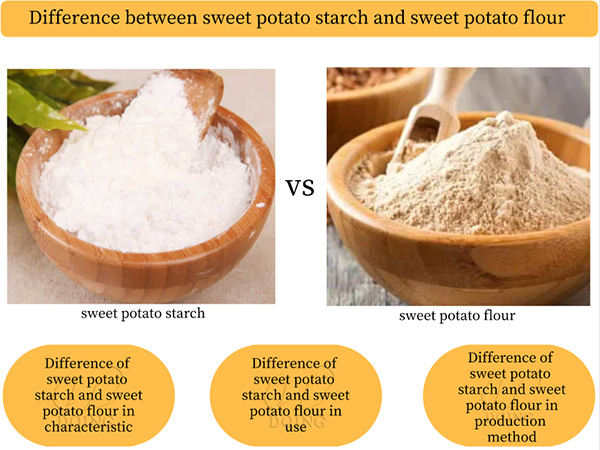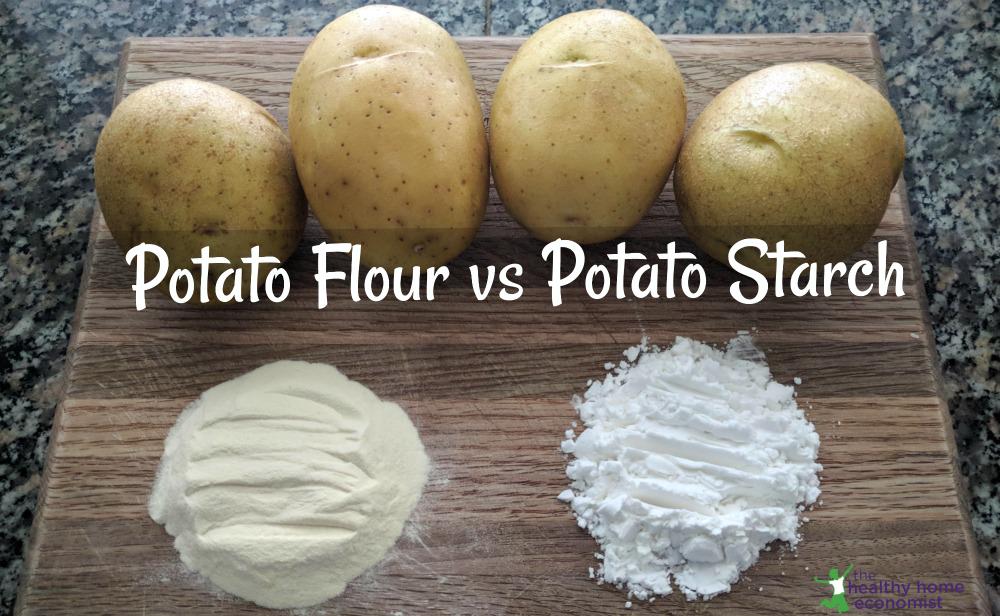
Hey there, fellow food lovers! It’s, your trusty guide in the kitchen. Today, we’re diving deep into the wonderful world of potatoes, but not in the way you might think. We’re unraveling the mystery behind two pantry staples that often leave home cooks scratching their heads: potato starch vs. potato flour.
While they might sound similar (and both come from our starchy friend, the potato), these two ingredients have distinct personalities and culinary superpowers. Knowing when to use each one can make all the difference in your cooking and baking adventures. So, grab your aprons, and let’s get cooking!
What Exactly Are Potato Starch and Potato Flour?
Before we explore their differences, let’s break down what each ingredient actually is:
Potato Starch: Imagine the purest form of potato starch, extracted from finely ground potatoes. It’s a fine, brilliant white powder, similar in texture to cornstarch. Think of it as the concentrated essence of potato starch, ready to work its magic in your kitchen.
Potato Flour: Unlike its starchy cousin, potato flour retains more of the whole potato goodness. After being cooked and dried, the entire potato is ground into a fine, beige-hued powder, giving it a slightly more robust, earthy flavor compared to potato starch.

Potato Starch: The Crispiness Champion
Potato starch is your secret weapon for achieving that irresistible crunch in fried foods. Its ability to withstand high temperatures without breaking down makes it a dream for creating light, crispy coatings.
Here’s how you can use potato starch:
- Crispy Fried Delights: Ditch the all-purpose flour and coat your chicken, fish, or vegetables in potato starch before frying. You’ll be amazed by the extra-crispy, golden-brown results.
- Thickening Soups and Sauces: Just like cornstarch, potato starch acts as a fantastic thickener. Whisk a little into your soups, stews, or sauces towards the end of cooking for a silky smooth texture.
- Gluten-Free Baking Powerhouse: Potato starch is a staple in many gluten-free baking blends. It adds lightness and a tender crumb to cakes, muffins, and breads.
Pro Tip: Dust your countertop with potato starch instead of flour when rolling out dough or fondant. It prevents sticking and adds a touch of crispness!
Where to Find It: Look for potato starch in the baking aisle of your grocery store, often near the cornstarch and other gluten-free flours. You can also find it online at retailers like Bob’s Red Mill (https://www.bobsredmill.com/: https://www.bobsredmill.com/) and King Arthur Baking Company (https://www.kingarthurbaking.com/: https://www.kingarthurbaking.com/).

Potato Flour: The Moisture Master
Potato flour, with its higher protein and fiber content, brings a unique set of skills to the culinary table. It’s a champion at absorbing moisture, making it a valuable asset in both baking and cooking.
Here’s how to put potato flour to work:
- Gluten-Free Baking Hero: While not ideal as a solo flour in baking, potato flour shines when combined with other gluten-free options like rice flour. It adds structure, a slightly chewy texture, and a subtle potato flavor to your baked goods.
- Longer-Lasting Breads: Add a spoonful or two of potato flour to your yeast bread recipes to enhance their moisture retention and keep them fresh for longer.
- Binding and Thickening Agent: Potato flour’s absorbent nature makes it an excellent binder for meatballs, veggie burgers, and even thickening sauces.
Pro Tip: Looking for a flavor boost in your potato recipes? A touch of potato flour can amplify that delicious, earthy potato taste.
Where to Find It: You can usually find potato flour alongside its starchy counterpart in the baking aisle or the gluten-free section of your supermarket. Online retailers like Bob’s Red Mill and King Arthur Baking Company also offer a wide variety of potato flour options.

Can You Substitute One for the Other?
While both ingredients come from potatoes, they’re not always interchangeable. Potato starch’s primary function is as a thickener and crispness enhancer, while potato flour excels in binding, moisture absorption, and adding a subtle potato flavor.
Here’s a quick breakdown:
| Feature | Potato Starch | Potato Flour |
|---|---|---|
| Texture | Fine, white powder | Fine, beige powder |
| Flavor | Neutral | Slightly earthy potato flavor |
| Best Uses | Thickening, frying, gluten-free baking | Gluten-free baking, moisture retention, binding |
| Interchangeability | Can sometimes be substituted for potato flour in small amounts for moisture retention | Potato flakes are a better substitute |

FAQs: Your Potato Starch and Flour Questions Answered
Q: Is potato starch healthier than potato flour?
A: Potato flour generally takes the lead in the nutrition department. Since it’s made from the whole potato, it retains more fiber, protein, vitamins, and minerals compared to potato starch, which is primarily pure starch.
Q: Can I use potato starch to make gravy?
A: Absolutely! Potato starch is an excellent gluten-free alternative to traditional wheat flour for thickening gravy. Just whisk a little into your gravy towards the end of cooking until you reach your desired consistency.
Q: What’s the best way to store potato starch and potato flour?
A: To keep your potato starch and flour fresh, store them in airtight containers in a cool, dry place. Avoid storing them near heat or moisture, as this can cause clumping.
Embrace the Potato Power!
There you have it, a deep dive into the world of potato starch and potato flour. Armed with this newfound knowledge, you’re ready to conquer a world of culinary possibilities. Whether you’re aiming for ultimate crispiness in your fried dishes or seeking the perfect gluten-free baking blend, these potato-powered ingredients are here to help you create deliciousness in the kitchen!






